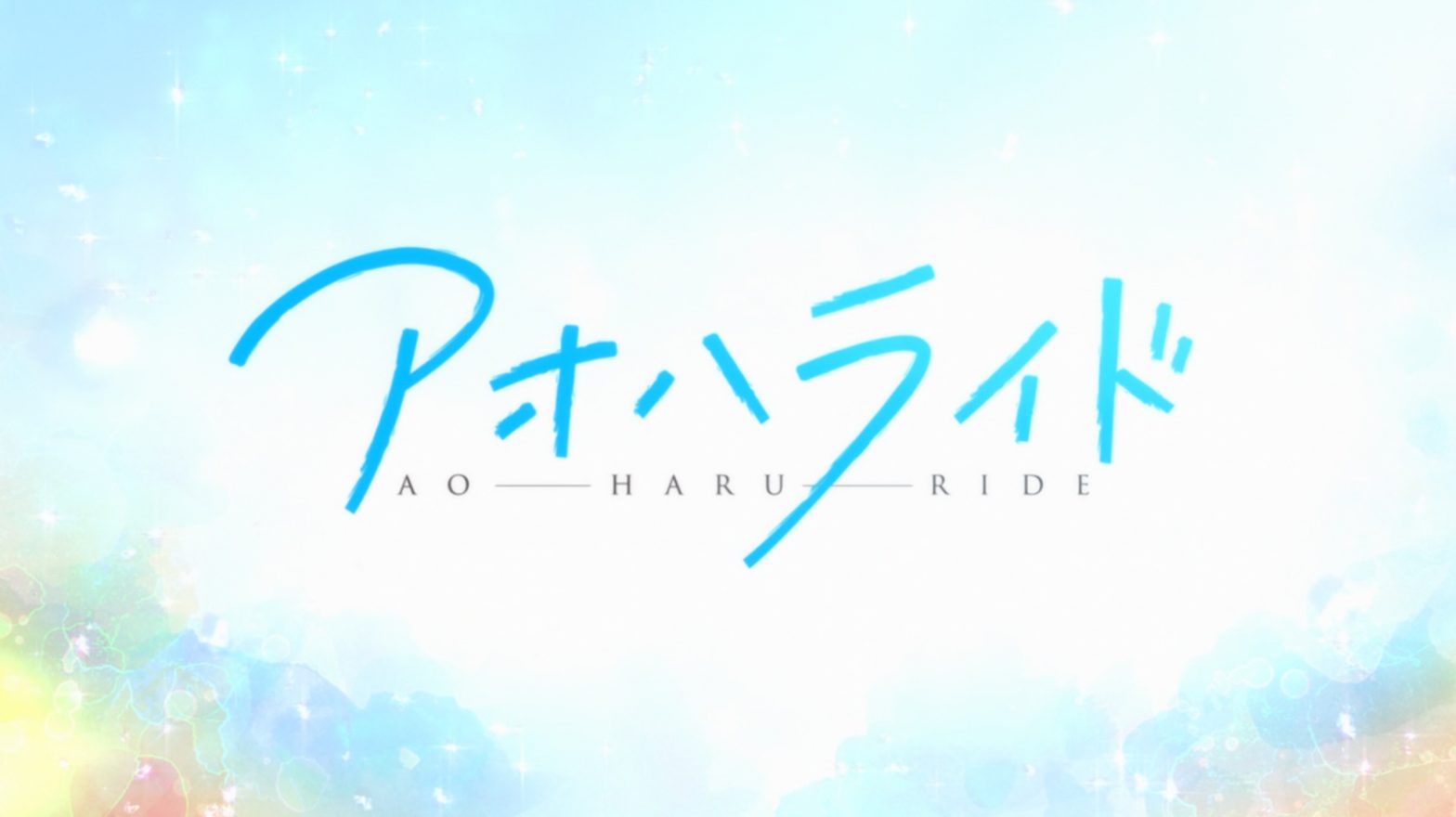Adapted from the first few volumes of the manga of the same name on Ao Haru Ride, translated to Blue Spring Ride, follows the story of Futaba Yoshioka and her relationship with Kou Tanaka. At a younger age, Futaba had grown attracted to Kou over the course of some memorable interactions with him. Futaba’s childhood memories of Kou all led up to the moment when she manages to make plans to attend the summer festival with him. After Kou hears Futaba proclaim her hate for all boys, he fails to show up at the summer festival and disappears from school altogether. Ao Haru Ride focuses on how Futaba’s high school life is changed by the reappearance of her childhood love who now carries the name, Kou Mabuchi.
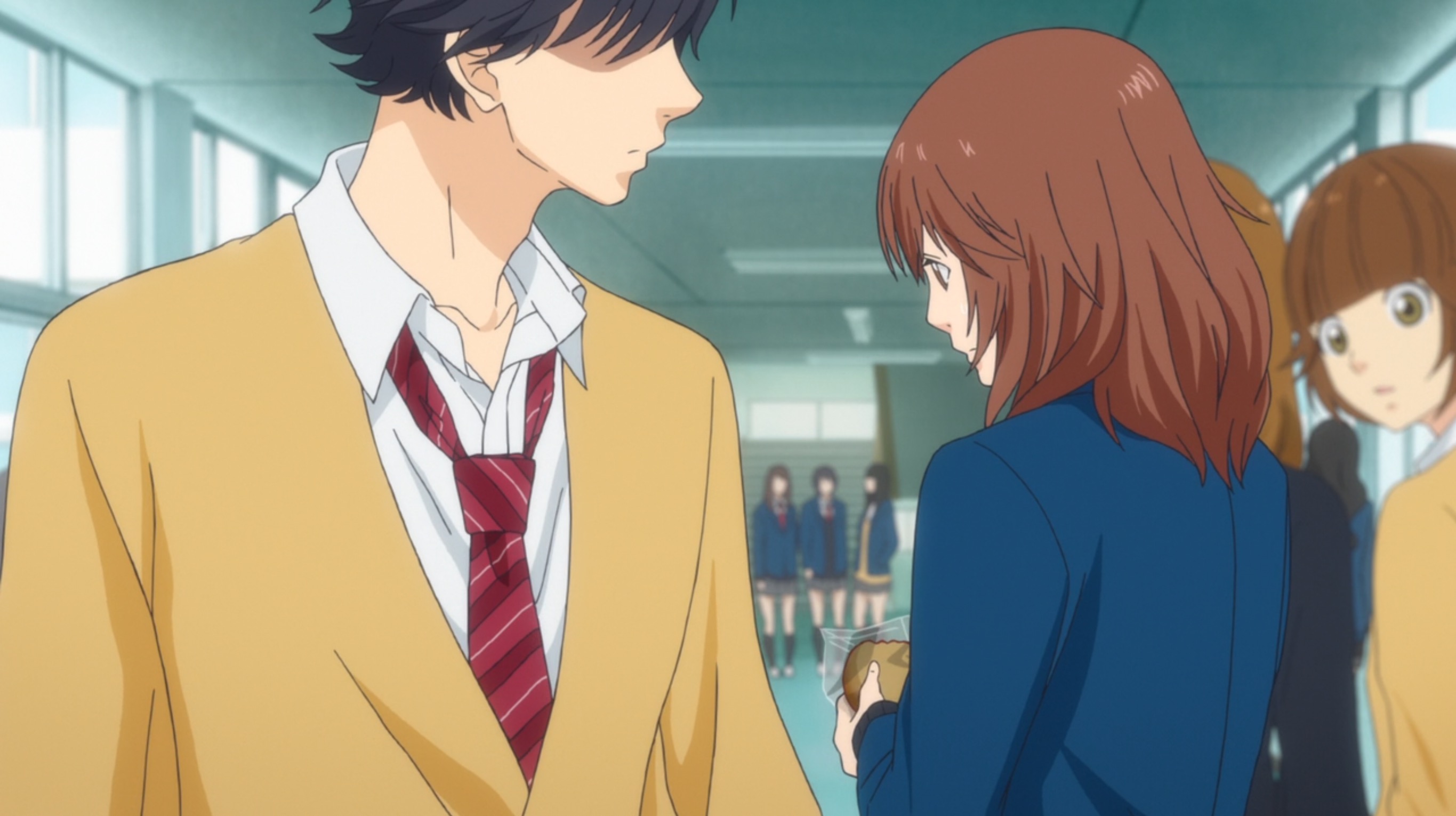
The genre of Ao Haru Ride is nothing new to the anime world. In fact in the recent years, there have been numerous anime that fall under the same genre of high school romance. Aside from the obvious popularity of romance in today’s culture, the setting of high school has served as one of the most common in anime throughout the years. While many aspects of the series will generally be familiar, Ao Haru Ride takes a step forward from the rest and stands out from most anime of this genre in recent years.
Ao Haru Ride takes an extremely common genre but consistently tells its story well. The anime manages to tie in memories of the past to moments of the present weaving in flashbacks at the most appropriate of times. Instead of creating a messy show filled with too many lengthy flashbacks, the series only shows what is necessary to highlight the meaning behind the moment that the two are sharing in the present. Many of these moments reveal a glimpse into Futaba’s impressions of Kou and show viewers the small details that she grows to love. It is also the focus on these small details that sets Ao Haru Ride apart making the relationship between the two mains special. We as viewers get to appreciate how Futaba sees Kou, how she remembers him, and what she adores about him. The focus on these small details and instances make the feelings of Futaba and her perception of Kou feel more natural and more appropriate to the high school setting.
The art style used in the series served to complement the overall feel of the plot. With a light and vibrant palette choice, the art style served to amplify the feelings associated with the relationship between Futaba and Kou. While not without drama, Futaba and Kou’s rediscovery of one another is a story that is pleasant in tone. This overarching atmosphere is captured in the choice of color and the art style that relates well with the plot.
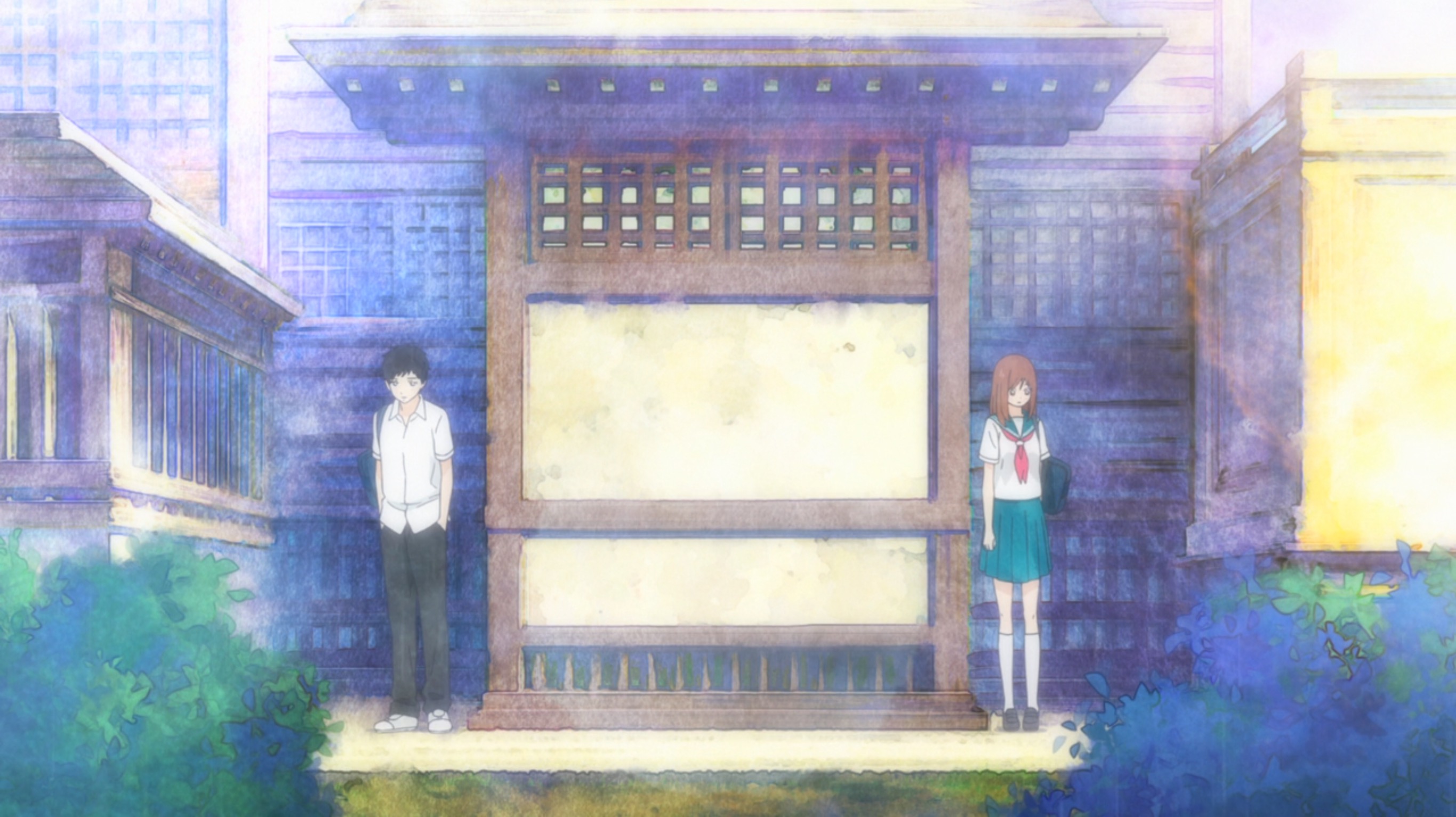
Also made evident by the art is the choice to use watercolor with very light colors and many tones of light blue and white to create flashback scenes. The use of this style emphasized the happiness and positivity of Futaba’s memories of Kou in the past creating an even clearer impression of both Futaba and Kou from their younger days.
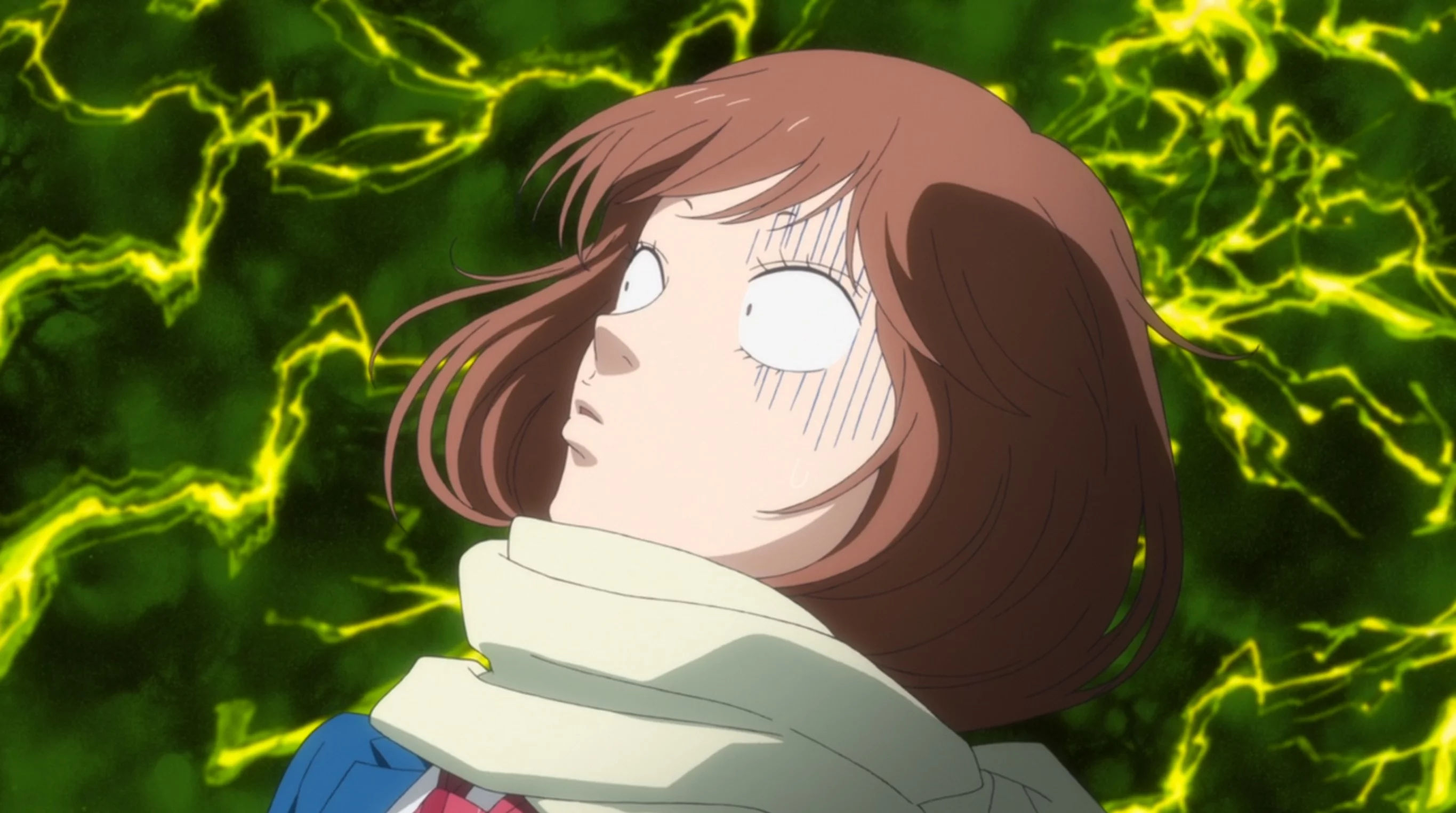
Aside from the development of the plot, the character development also serves as a strong point of Ao Haru Ride. With the series being told from the point of view of Futaba Yoshioka, viewers see the events from her point of view and are made privy to her perception of the situation. This viewpoint of Futaba is something that show executes perfectly. We get a glimpse of her thoughts and impressions of Kou. We get to watch and hear what she thinks of him and more importantly, how those thoughts change and evolve over the course of the series as she learns more about Kou. This not only allows for a deeper understanding of Futaba as a character but also highlights the fact that she is a high school girl. Many of her thoughts, her musings, and even her reactions as heard in her internal monologues are appropriate for her age and her character. This increases the sense of realism and the naturalness of the setting of the story. Acting as a foil to her straightforward nature that we are allowed to fully experience, we are given the character of Kou who is more complicated and mysterious in nature. Having gone through difficulties and traumatic events in his life, his high school self called Kou Mabuchi, is shown to be different from who he was in the past, a fact which Futaba stresses more than once over the course of the series. We are shown a young boy and the product of his growth, development, and maturity without the process in between. Like Futaba, we are allowed to slowly discover why Kou Mabuchi is who he is. Again this aspect of the show has a sense of realism because we discover the cause of this change through the eyes of Futaba rather than being allowed to see it instantly. We are allowed to slowly grow attached to Kou as he is now by meeting him and getting to know him. This approach to building Kou’s character serves to make him a realistic male lead that is capable of drawing in both Futaba and the viewers of the series.
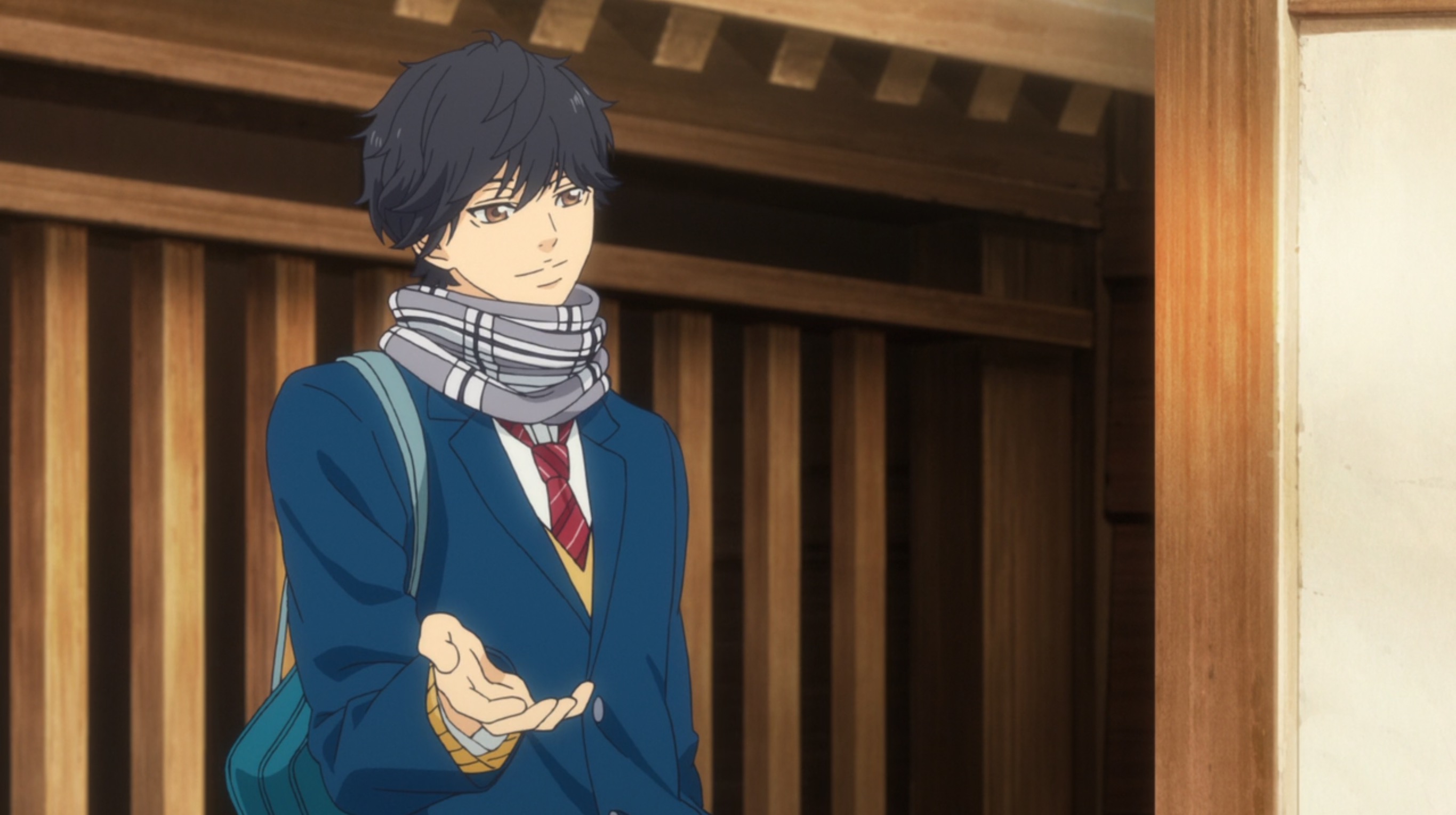
Overall, Ao Haru Ride is a refreshing rendition of a well loved genre in anime. It sets the tone and establishes a setting that stays consistent throughout the series all while managing to build realistic and relatable characters that create a lasting impression on viewers.
